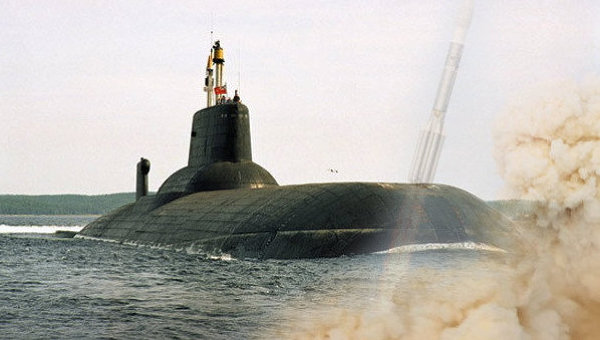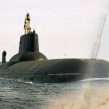
Russian Navy and Defense Industry: Anxious August and Sober September
Publication: Eurasia Daily Monitor Volume: 7 Issue: 170
By:

August was the cruelest month for the Russian navy in recent years. Not since the loss of the SSNM Kursk had the news been so bad. Moscow and much of central Russia had suffered through a seemingly unending heat wave that had made life miserable for all and started large- scale fires that proved difficult to control. Military units were deployed to fight the many fires. For the navy those fires brought material losses, embarrassment and a presidential reprimand. The cause of this were the material losses sustained at Supply Base 2512 for naval aviation outside Moscow, where firefighting efforts proved ineffective resulting in serious damage. The Security Council held a special meeting on the failure to save the base and President Dmitry Medvedev cited the Commander-in-Chief of the Navy, Admiral Vladimir Vysotskiy, and Chief of the Main Naval Staff, Admiral Aleksandr Tatarinov for non-fulfillment of their duties. The Deputy Chief of Naval Rear Services, Rear Admiral Sergei Sergeev was fired. The president said that other heads would roll, including the Chief of Naval Aviation and his deputy, the Chief of Rear Service for Naval Aviation and the Commander of Supply Base 2512. Medvedev also ordered the Defense Minister, Anatoliy Serdyukov, to relieve other officers who were guilty of malfeasance. The press put primary responsibility for the disaster on Lieutenant Colonel Viktor Biront for not taking timely action to raise the fire alert status of the base and failed to clear the woods that brought the fire into the base. Reportedly, Biront’s predecessor had tried to clear the woods along the base’s border and had been fined by the local authorities. Biront and some forty other service men had risked their lives to fight the fire and Biront suffered burns from the effort. Now all of them had been relieved. Oleg Vladykin reported that in the past year the defense ministry ordered major cuts in the base’s fire brigades by about 150 men as an economizing measure. However, cutting fat can lead to cutting muscle when it is most needed (Nezavisimoye Voyennoye Obozreniye, August 13).
In early September, Nezavisimaya Gazeta ran an editorial by Andrei Riskin, a deputy editor of the paper and Captain 2nd Rank in the naval reserve. Riskin lamented Russia’s loss of the oceanic navy that had been created by Admiral Gorshkov. It was, he said, being sunk without a Tsu Shima, a reference to the staggering defeat inflicted upon the Russian fleet by Admiral Togo during the Russo-Japanese War. In this, however, responsibility for the losses was not an enemy force but the Russian defense ministry. The editorial was in response to the report that the Main Naval Staff would not move to St. Petersburg Admiralty, but would stay in Moscow to be housed in the former building used by the head quarters of the Group of Forces. Official sources said that with the move in Moscow came an announcement that the personnel of the staff would be cut to one third of its current size and the main naval staff would be reduced to a department within the General Staff. Vice Admiral Oleg Burtsev, Deputy Chief of the Main Naval Staff then denied that there had been any change in the decision to move the staff to St. Petersburg, but made no comment on the purported cuts in the staff’s size. Riskin noted that the entire affair left the impression that neither the defense ministry, General Staff nor the Main Naval Staff knows what to do with the navy. Reducing the Main Naval Staff to jut a department within the General Staff appeared to be just another slap for the navy by soldiers and civilians who did not understand or appreciate naval power. Riskin saw demotion of the Main Naval Staff to be another symptom of the navy’s decline. The current transformation of the Russian military was leading to the inevitable decline of the navy. It is one thing to cut staff and entirely another matter to oversee the self-destruction of the navy which is a component in the Russian nuclear triad. “Will we let our strategic nuclear submarines [SSBN’s] be ‘turned into needles’ like the Main Staff?” Riskin asked. The navy’s leadership was guilty of proclaiming progress and promising a bright future when every indication pointed towards decline. All the talk among the naval leadership about new aircraft carriers, the purchase of two Mistral-class helicopter carriers, and the acquisition of advanced weapons for the twenty-first century was hollow. Riskin pointed to the naval high command’s promises that the Borei class SSBN’s would soon be armed with the ultramodern strategic ballistic missile Bulava, when all that could be reported were more failed test launches of that missile. Moreover, a department cannot command an oceanic navy. Riskin concluded: “It seems that the generals and even the admirals simply do not see an oceanic navy as necessary. Are we to understand that no navy at all is needed?” (Nezavisimaya Gazeta, September 6).
On September 10, Aleksandr Emelianenkov reported that the Dmitri Donskoi, a Typhoon-class SSBN adapted for test launching the Bulava, had sailed from Severodvinsk to the missile launch area where the Russian navy tests its ballistic missiles in the White Sea and then had returned to port without executing the anticipated 13th test launch of an RSM-56 Bulava SLBM. The SSBN returned to base with no explanation and so the anticipated test of Bulava on September 9-11 was postponed without setting a new launch date. Serdyukov on his return to Moscow from Paris, and before his departure to Washington for talks with Secretary of Defense Robert Gates, only commented that the no launch was imminent and said: “Most likely, this will happen in September and definitely not at the beginning of the month.” Emelianenkov, noting the series of failures that has plagued the Bulava, stated that insiders within the Russian military-industrial complex had asserted that everything was ready for the test launch and there were high hopes of success. There had been no test launches of the Bulava since the last failure in December 2009 (Rossiyskaya Gazeta, September 10).
Shortly afterwards the Russian press reported a major shake-up in the leadership of Bulava development. Its long-time leader, Yuri Solomonov, the chief engineer in charge of the development of the solid-fueled Topol M upon which the Bulava was based, was removed from the Bulava project but left in charge of land-based Topol M development. By order of Anatoliy Perminov, head of Roskosmos, (Federal Space Agency) Aleksandr Sukhodolsky, the former design director at the Moscow Institute of Thermal Technology, will assume direction of the Bulava project. Solomonov sold the defense ministry and navy on the idea that the adaptation of the Topol M to sea-based launching would be a relatively simple technical problem. However, in the last six years out of twelve test firings only five were officially listed as successes. Unnamed sources close to the project say that actually only one test led to a warhead impact in the test area. Much speculation about the problems facing Bulava has focused on the problem of quality control among items produced by subcontractors and systems integration. The success of Bulava will determine whether the construction of the Borei-class SSBN’s will continue since the Bulava is the only missile that can be launched from the submarine missile tubes. Serdyukov said that the next test launch from the Dmitri Donskoi could lead to a series of operational test launches from the Borei-class SSBN Yuri Dolgoruki (Rossiyskaya Gazeta, September 20).
The Russian press began to speculate on the consequences of another test failure later this month. Discussion focused on two questions: what to do in case of the next test failing and whether there was an alternative to Bulava. The appointment of Aleksandr Sukhodolsky would seem to be the answer to the first question and involves a new leadership team for the project. On the second point there appears to be no alternative missile that will fit the Borei-class SSBN’s and consequently the alternative is to modernize Delta IV class SSBN’s and keep them in service until Bulava’s problems have been solved (RIA Novosti, September 17). Given the pessimism expressed by Andrei Riskin about the fate of Russia’s new SSBN’s one might ask if there are any contingency plans to reduce the role of SSBNs in Russia’s nuclear triad.




